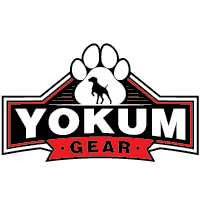Introduction to Dog Harnesses
Choosing the right dog harness is essential for the comfort and safety of your pet. A harness not only helps you manage your dog but also provides support and control without putting too much strain on their neck and back, unlike traditional collars. This comprehensive guide will help you understand the different types of harnesses available, key features to consider, and how to ensure a proper fit for your furry friend.
Types of Dog Harnesses
Dog harnesses come in various designs, each catering to different needs and activities. Understanding the different types will help you choose the best one for your dog:
1. Standard Harness
The standard harness is the most common type and is suitable for everyday use. It typically has a simple design with straps that go around the neck and back, distributing pressure more evenly across the chest.
2. No-Pull Harness
As the name suggests, no-pull harnesses are designed to discourage pulling by shifting the pressure to the armpits or redirecting your dog towards you when they pull. These are ideal for training dogs who have not yet mastered leash manners.
3. Step-In Harness
Step-in harnesses are perfect for dogs who dislike having items put over their heads. The dog steps into the harness, which then buckles or clips at the back. They provide easy handling and are excellent for quick trips out.
4. Padded Harness
Padded harnesses offer extra comfort and are ideal for active dogs that spend a lot of time moving outdoors. They help reduce friction and pressure that could cause discomfort during prolonged use.
5. Tactical Harness
Tactical harnesses are robust and come with additional features like storage pockets and hooks. They are often used for working dogs but can also be great for hiking and camping with pets.
Features to Consider
When choosing a dog harness, consider these important features to ensure you select the best one for your pet's needs:
Fit and Size
The fit is crucial; a poorly fitting harness can cause discomfort or even injuries. Make sure to measure your dog’s neck and chest before purchasing a harness. Most products have a sizing chart to help you choose the right fit.
Material
The material of the harness should be durable and comfortable. Nylon is a popular choice due to its durability and ease of maintenance, but for dogs with sensitive skin, a softer fabric like fleece might be better.
Adjustability
A good harness should have adjustable straps to allow for a snug fit. This not only enhances comfort but also improves security, preventing your dog from slipping out.
Visibility
If you often walk your dog in low-light conditions, look for a harness with reflective strips or materials that make your pet more visible to motorists.
Ease of Use
Consider how easy the harness is to put on and take off. This is especially important if you have a less cooperative dog or one with mobility issues.
Ensuring a Proper Fit
To ensure the harness fits well, you should be able to fit two fingers under any strap. Check the fit regularly, especially if you have a growing puppy. Also, observe your dog’s behavior while wearing the harness to make sure they are comfortable and that it does not restrict their movement.
Conclusion
Investing in the right dog harness can lead to safer and more enjoyable walks or activities. It is crucial to choose a type that suits your dog’s size, behavior, and your typical activities. Remember to regularly check the condition of the harness for any wear and tear to ensure ongoing safety. With the right harness, both you and your dog can look forward to many happy, secure outings together.

